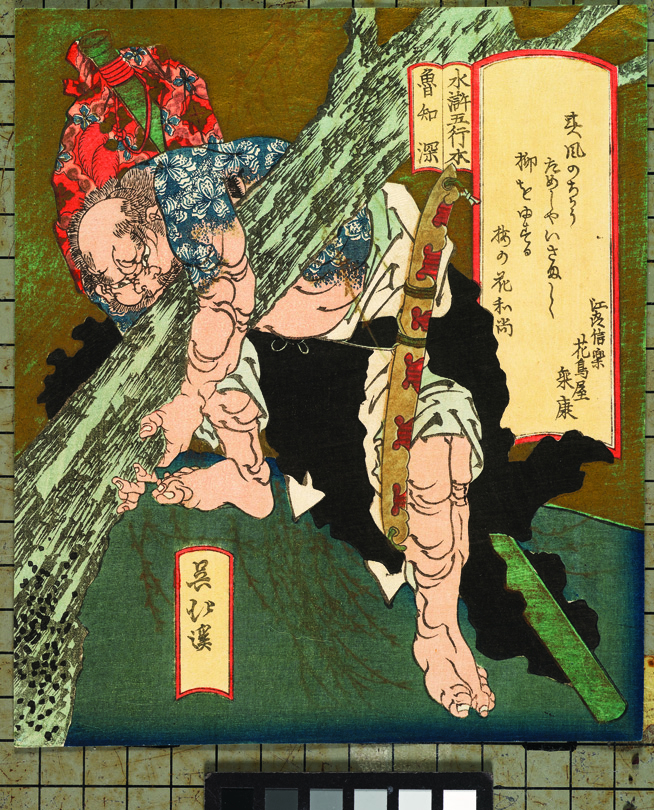Tattoos: Japan

Guest blog by Asato Ikeda, Curator (Bishop White Postdoctoral Fellow of Japanese Art).
In the minds of average Japanese people today, tattoos have a strong association with criminality, especially with the yakuza, or Japanese mafia. This is why individuals with tattoos are prohibited from entering many swimming pools, hot springs, and sports. This negative social perception toward tattoos, however, is a relatively recent phenomenon. In fact, Japan has a long history of appreciating tattoos, with roots, some suggest, in the Neolithic Jōmon period (circa 10,500–300 BC).
The most important time in the development of tattoos in Japan was the Edo period, which lasted from 1603 to 1868. The period is characterized by the pleasure-seeking culture of the “floating world,” especially entertainment at brothels and the kabuki theatre in the urban towns of Edo (today’s Tokyo), Kyoto, and Osaka. Kabuki theatre was instrumental in popularizing tattoos: The plays often featured tattooed characters, who were then portrayed in woodblock prints, or ukiyo-e. In Edo Japan, tattoos were especially associated with the tale of The Water Margin (J: Suikoden), a story about 108 Chinese outcasts and heroes who had extensive tattoos. Tattoos were customarily worn by working class people. Tattoos also played an essential part in the lives of Japan’s indigenous population in Hokkaido and Okinawa, especially those of women.
In the context of Japan’s radical Westernization and industrialization of the late nineteenth century, tattoos came to be considered barbaric and undesirable by Japanese officials. Tattoos were subsequently legally banned until 1948, which had devastating effects on Japan’s indigenous cultures and forced the tattoo culture underground. In preparation for the 2020 Tokyo Olympics in particular, and in the context of Japan’s effort to globalize the country in general, there is currently a public debate about whether Japanese people should rethink their predominantly negative attitude toward tattoos.
How To See It: Tattoos runs until September 5, 2016.
